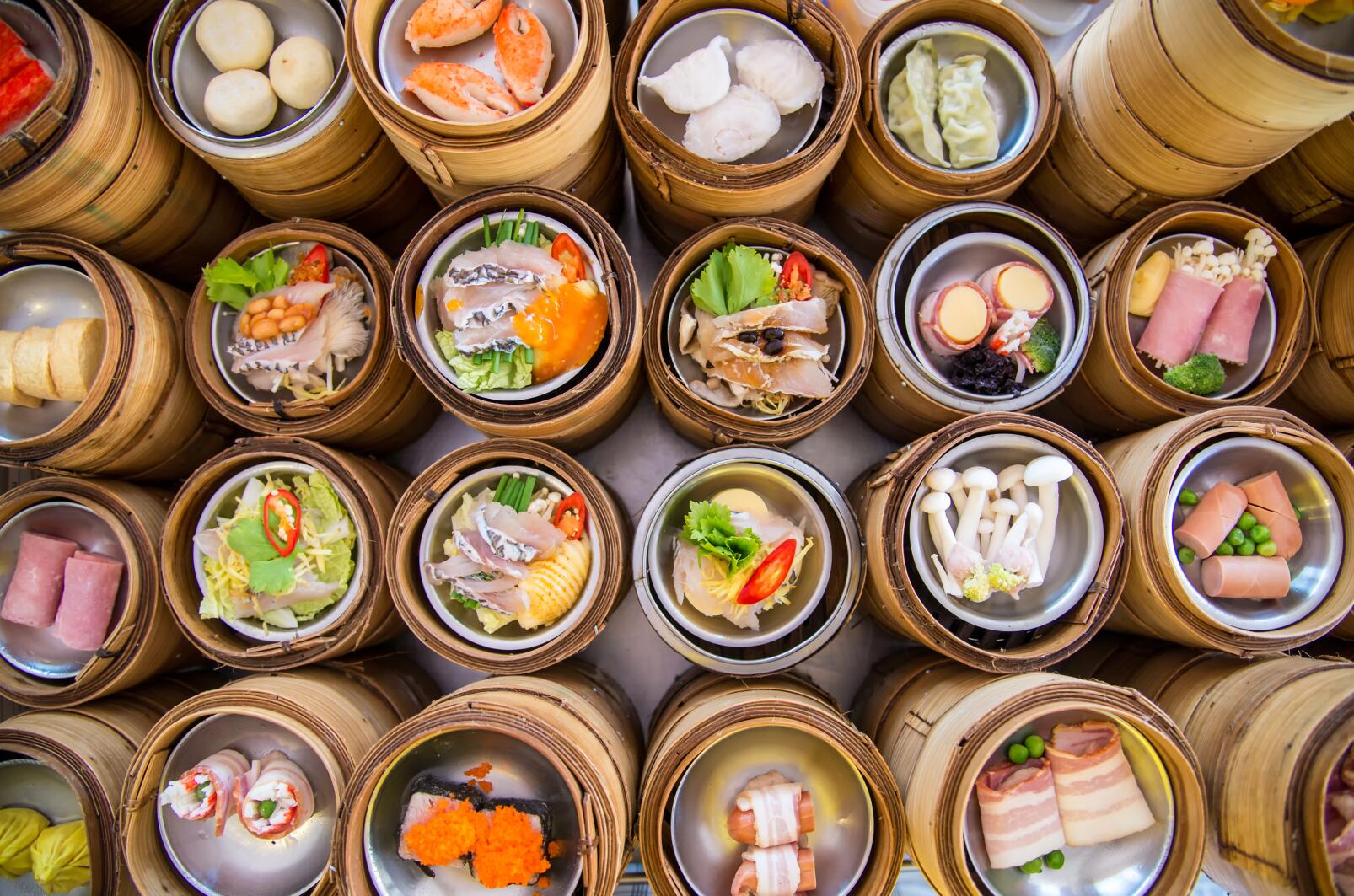
Chinese foods and drinks are quite different from other
countries. Chinese wide areas and diversity of peoples give rise to
Chinese colorful eating and drink. Chinese diet culture has become an
art that attracts a number of foreigners all over the world. During a
long period of production and living practice, Chinese nation has made
great contribution to the world on the aspects of food resource
exploration, food treatment, nutrition and health care, dishware design
and cuisine aesthetics. Chinese intellectuals have created countless
dishes with apt names, aromas, flavors and colors, greatly enhancing the
dining experience. During these four or five thousand years of
development, Chinese cuisine appears various features in different
periods and regions. Generally speaking, Chinese people mainly live on
the five common cereals and vegetables and added by a small supply of
meat. This eating habit is formed by the mode of production which is
centered by agriculture. Moreover, Chinese food makes cooked food and
hot food primary, which is related to the advance of culinary skills and
early civilization of the country.
China's Cuisine
China's cuisine is as varied as its landscape. Each city has its own
specialties and styles: Sichuan for hot and spicy food imbued with the
red chili pepper, Shanghai for sweeter flavors and famous dumplings and,
of course, Hong Kong for the famed dim sum.
Generally speaking, there are eight main regional cuisines: Anhui,
Canton, Fujian, Hunan, Jiangsu, Shandong, Sichuan and Zhejiang. There is
also Huaiyang Cuisine, a major style and even viewed as the
representation of the cuisine.
Occasionally, Beijing cuisine and Shanghai cuisine are also cited along
with eight regional styles as ten regional cuisines in China. There are
also featured Buddhist and Muslim sub-cuisines within the greater
Chinese cuisine, with an emphasis on vegetarian and halal-based diets
respectively.
Chinese Alcohol
In Chinese the word for alcohol "JIU" is used to mean all types of
alcoholic beverages, from "PIJIU" (beer) to liquors (just called 'jiu')
to grape wine ('putao jiu').
Chinese people have drunk alcohol with their meals since the Neolithic
period (about 5000-1700BC). Most alcoholic drinks are produced from
cereal grains and some are drunk warm. The little pot shown here, made
between AD 500 and 580, was used for heating wine. The tripod legs would
have straddled the heat source. The handle at the side of the pot is
hollow to take a wooden extension for lifting it off the stove. At the
same time a stick would have been passed through the ceramic loop on the
opposite side to steady the hot pot. Wine warmers like this often look a
bit like animals. The potters who made them sometimes played up this
resemblance by adding tails and beast-like heads or faces, or by giving
the tripod legs hooves or paws. This pot has an animal's tail but no
face.
Chinese Tea
Tea is China's most popular beverage. Chinese people drink green
unfermented tea, taken hot without milk or sugar, with meals and snacks
and on its own throughout the day. Today, they use mugs with lids and
handles, but up until this century tea was always drunk from small
bowls. Eight hundred years separate the two tea bowls in the picture.
The one on the stand was made between 1000 and 1125, by which time tea
drinking had become an everyday habit for most and an art for some.
Aristocrats and educated monks and nuns would gather together to taste
fine teas and appreciate beautiful utensils. The powdered tea favoured
at this time was whisked up with hot water in the tea bowl until it
formed froth. The white whipped topping showed up well against black tea
bowls like this, which was one reason for their popularity. Tea making
competitions were held, the winner being the person whose froth lasted
longest. The thick sides of these stoneware bowls mean the heat of the
tea is not lost quickly and the tea- drinker's fingers do not get
scalded. Stands, such as the one here, were used for serving or to raise
steaming tea bowls to the lips.
In China, the Chinese drink tea at every meal for good health and simple
pleasure. Chinese tea consists of tea leaves which have been processed
using methods inherited from China. According to popular legend, tea was
discovered by Chinese Emperor Shennong in 2737 BCE when a leaf from a
Camellia sinensis tree fell into water the emperor was boiling. Tea is
deeply woven into the history and culture of China. The beverage is
considered one of the seven necessities of Chinese life, along with
firewood, rice, oil, salt, sauce and vinegar.
Some writers classify tea into four categories, white, green, oolong and
black. Others add categories for red, scented and compressed teas. All
of these come from varieties of the Camellia sinensis plant. Chinese
flower tea, while popular, is not a true tea. Most Chinese tea is
consumed in China and is not exported. Green tea is the most popular
type of tea used in China. Dragon Well Tea and Eyes on Heaven Tea is
very famous in China.
Long Jing and Tian Mu may match Heaven Pool tea due to the weather in
their growing regions. Because the cold season comes earlier to the
mountains, there is abundant snow in the winter; hence the tea plants
germinate later.